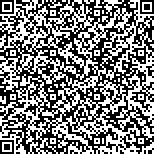| 引用本文: | 赵永晶,李鸿,王腾,刘宇,刘其根,刘军,郝志才,朱湘强,沈建忠.新疆乌伦古湖大型底栖无脊椎动物的群落结构.湖泊科学,2011,23(6):974-981. DOI:10.18307/2011.0622 |
| ZHAO Yongjing,LI Hong,WANG Teng,LIU Yu,LIU Qigen,LIU Jun,HAO Zhicai,ZHU Xiangqiang,SHEN Jianzhong.Community structure of benthic macroinvertebrates in Lake Ulungur in Xinjiang. J. Lake Sci.2011,23(6):974-981. DOI:10.18307/2011.0622 |
|
| |
|
|
| 本文已被:浏览 8335次 下载 4068次 |

码上扫一扫! |
|
|
| 新疆乌伦古湖大型底栖无脊椎动物的群落结构 |
|
赵永晶1, 李鸿2, 王腾1, 刘宇1, 刘其根3, 刘军4, 郝志才4, 朱湘强4, 沈建忠1
|
|
1.华中农业大学水产学院, 武汉 430070;2.湖南省水产科学研究所, 长沙 410153;3.上海海洋大学生命科学学院, 上海 200090;4.新疆福海水产局, 福海 836400
|
|
| 摘要: |
| 乌伦古湖是我国十大内陆淡水湖之一, 同时也是新疆维吾尔自治区的第二大湖泊和主要渔业基地.近年来, 随着气候变化和人为因素的影响, 湖区水体营养状况、生物群落组成等均发生了较大变化.为揭示该湖大型底栖无脊椎动物的群落结构特征及其对生态系统变化的响应, 2006年11月至2008年7月设28个采样点对大型无脊椎底栖动物的群落结构特征进行了季节性调查分析.共采集到底栖动物87种, 其中水生昆虫61种, 占种类总数的70.1%, 寡毛类14种, 占总种数16.2%, 软体动物7种, 占总种数的8.0%, 其它类5种, 占总种数的5.7%.大型底栖无脊椎动物年平均密度为1015.01 ind./m2, 年平均生物量为9.83g/m2.各季度大型底栖动物的密度表现为冬季(1234.96 ind./m2) >春季(1044.47 ind./m2) >秋季(931.16 ind./m2) >夏季(849.44 ind./m2), 生物量同样表现为冬季(13.54g/m2)>春季(12.01g/m2)>秋季(8.37g/m2)>夏季(5.02g/m2).Shannon-Wiener多样性指数年均值为2.19, Margalef丰富度指数年均值为1.34.相关分析表明, 水深是影响大型底栖无脊椎动物密度和生物量分布的关键因子。 |
| 关键词: 乌伦古湖 大型底栖无脊椎动物 群落结构 多样性指数 相关分析 |
| DOI:10.18307/2011.0622 |
| 分类号: |
| 基金项目:新疆福海县政府课题和国家科技支撑计划项目(2006BAD03B02)联合资助 |
|
| Community structure of benthic macroinvertebrates in Lake Ulungur in Xinjiang |
|
ZHAO Yongjing1, LI Hong2, WANG Teng1, LIU Yu1, LIU Qigen3, LIU Jun4, HAO Zhicai4, ZHU Xiangqiang4, SHEN Jianzhong1
|
|
1.Ministry of Agriculture College of Fisheries, Huazhong Agricultural University, Wuhan 430070, P.R.China;2.Hunan Fisheries Science Institute, Changsha 410153, P.R.China;3.College of Aqua-life Science and Technology, Shanghai Ocean University, Shanghai 200090, P.R.China;4.Aquatic Bureau of Fuhai of Xinjiang Uygur Autonomous Region, Fuhai 836400, P.R.China
|
| Abstract: |
| Lake Ulungur is the second largest lake of Xinjiang Uigur Autonomous Region and one of the ten largest freshwater lakes in China.With the impact of human activities and climate variation, nutrients and biotic communities in the lake have been changed obviously.To understand the community of benthic macroinvertebrates and its response to the changes in their environ-ment, we surveyed the benthic macroinvertebrates community in Lake Ulungur seasonally from Nov.2006 to July 2008.In total, 87 taxa were recorded, including 61 Insecta (70.1%), 14 Oligochaeta (16.2%), 7 Mollusca (8.0%) and other 5 taxa (5.7%).The annual density and biomass averaged 1015.01 ind./m2 and 9.83 g/m2, respectively.The density was highest in winter(1234.96 ind./m2), followed by spring (1044.47 ind./m2) and autumn(931.16 ind./m2), and lowest in summer (849.44 ind./m2).The biomass of benthic macroinvertebrates was highest in winter(13.54 g/m2), followed by spring(12.01 g/m2) and autumn(8.37 g/m2), and lowest in summer(5.02 g/m2).The annual average value of Shannon-Wiener diversity index and Margalef diversity index was 2.19 and 1.34, respectively.Correlation analyses indicated that water depth was the key factor influ-encing the standing crops of the benthic macroinvertebrates in this lake. |
| Key words: Lake Ulungur benthic macroinvertebrate community structure diversity index correlation analysis |
|
|
|
|